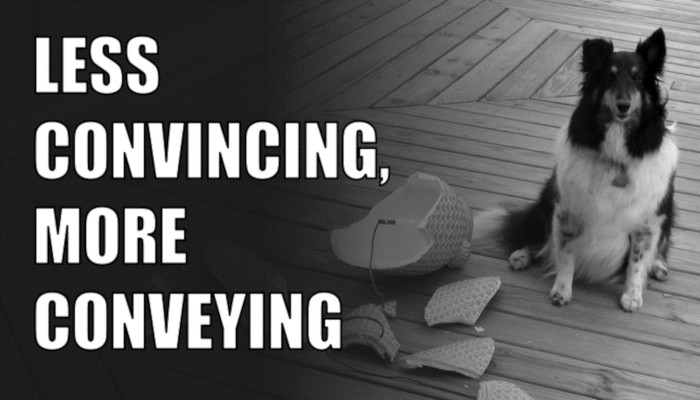
Susan Carnicero is a former CIA agent who specializes in spotting deception. I first learned of her through a YouTube video of her teaching how to tell if someone is lying. One of the deception techniques jumped out at me. People who lie convince while those telling the truth convey.
The distinction resonated with me. I once had an old boss who always said, “We need to manage the customer’s expectations.” I’ve always hated that statement and now understood why. He wanted us to convince while I like to convey.
Susan explains that “…a convincing statement is the strongest arrow…” in a liar’s quiver, because “we all want to be convinced. We want to believe that all people are good and that they’re always telling us the truth.”
For example, there are only two appropriate answers to the question, “Did you steal the merchandise?” Yes or no. However, a liar might say something like, “I’ve been loyal to this company for so long; I’ve never given you any reason to think that I’m a thief; or how could you ask me something like that?” Notice that none of these responses contain a denial. The person is trying to convince not convey.
My former boss sees marketing’s role as one to convince as opposed to convey. Convincing copy is easily identifiable through an abundance of hyphenated terms like: world-class, state-of-the-art, easy-to-use, thought-leader, industry-leading, leading-edge, etc… All are designed to convince not convey.
Susan leaves us with one last thing to consider when folks lay it on too thickly by invoking God’s name, swearing on a relative’s grave, or using hyphenated marketing terms. “Convincing statements sound so true, or in this case, irrefutable.” But they still don’t answer the question.
The next time your write some marketing copy, ask yourself the following question. Am I trying to convince or convey? If it’s the former, try rewriting for the latter.
Photo Credit: Jim Thompson under a Creative Commons Attribution-ShareAlike 2.0 Generic (CC BY-SA 2.0)